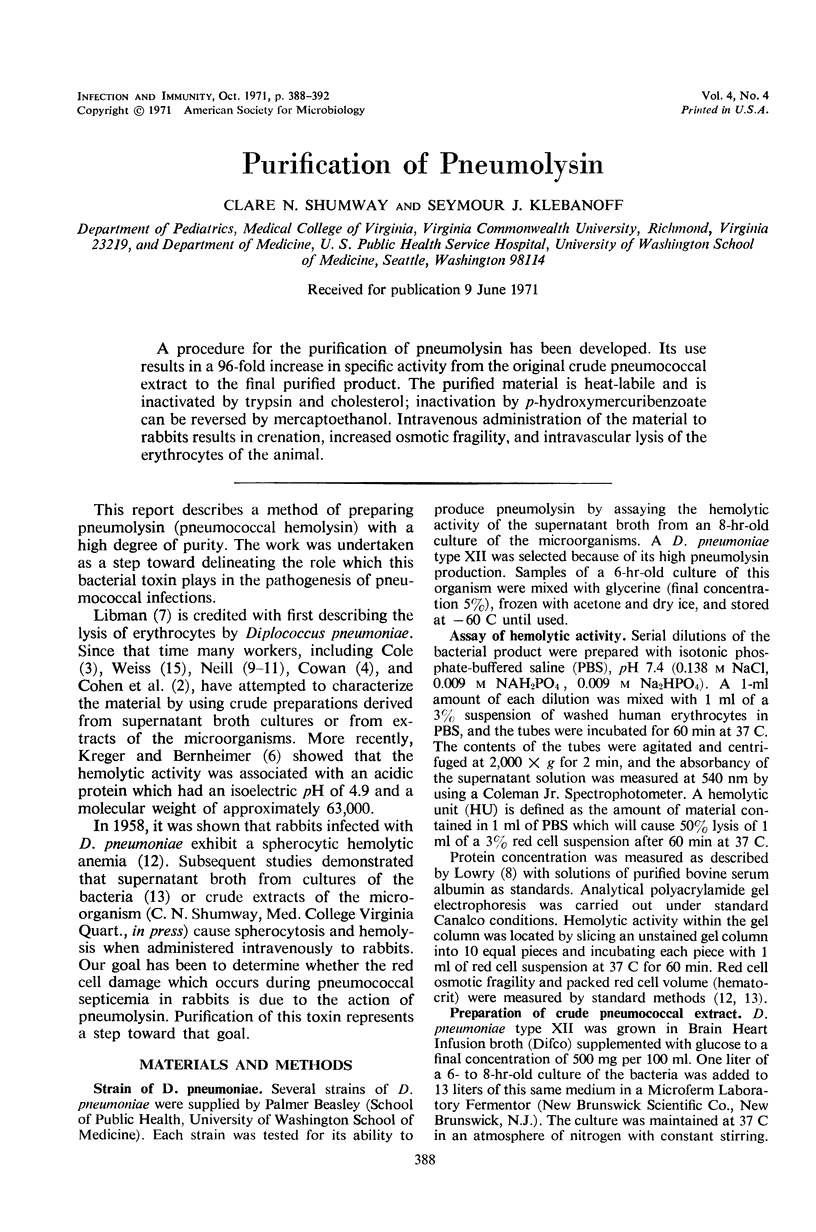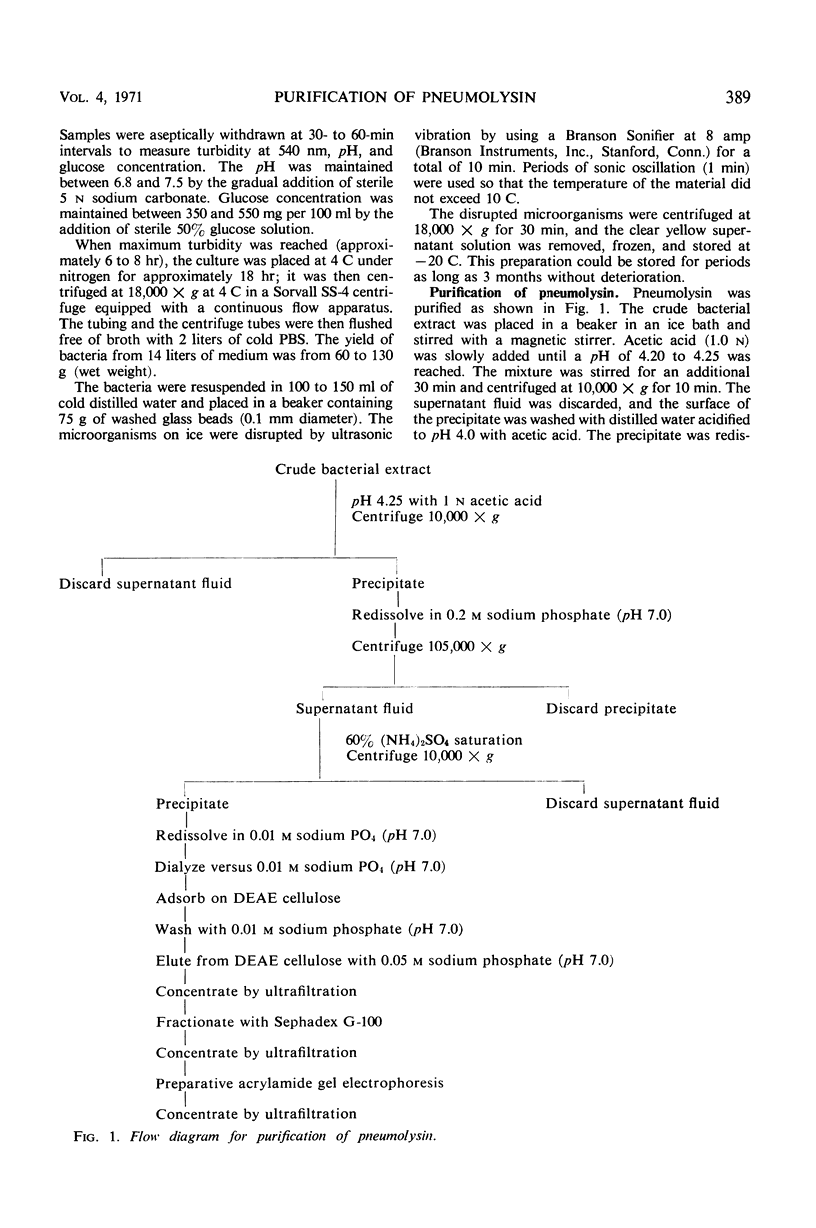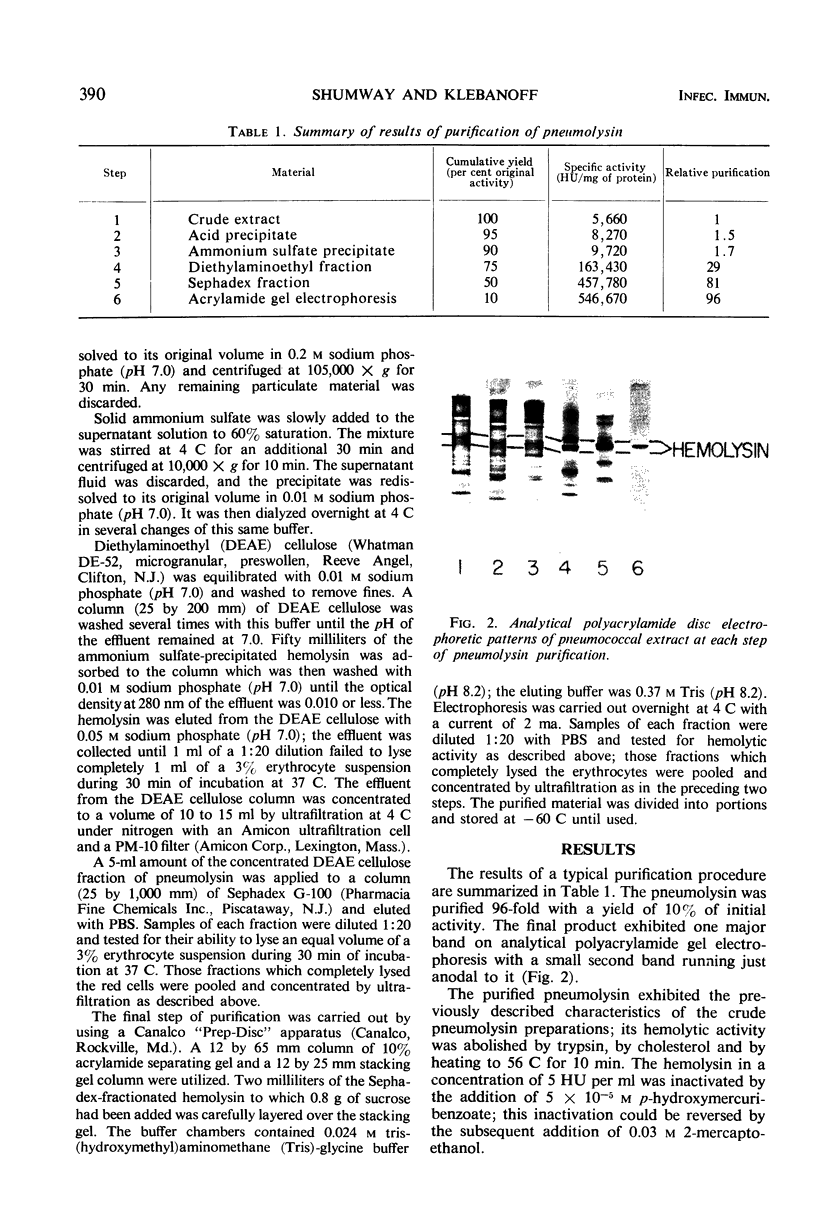Abstract
A procedure for the purification of pneumolysin has been developed. Its use results in a 96-fold increase in specific activity from the original crude pneumococcal extract to the final purified product. The purified material is heat-labile and is inactivated by trypsin and cholesterol; inactivation by p-hydroxymercuribenzoate can be reversed by mercaptoethanol. Intravenous administration of the material to rabbits results in crenation, increased osmotic fragility, and intravascular lysis of the erythrocytes of the animal.
Full text
PDF




Images in this article
Selected References
These references are in PubMed. This may not be the complete list of references from this article.
- Cohen B., Halbert S. P., Perkins M. E. Pneumococcal Hemolysin: The Preparation of Concentrates, and Their Action on Red Cells. J Bacteriol. 1942 May;43(5):607–627. doi: 10.1128/jb.43.5.607-627.1942. [DOI] [PMC free article] [PubMed] [Google Scholar]
- Kreger A. S., Bernheimer A. W. Physical behavior of pneumolysin. J Bacteriol. 1969 Apr;98(1):306–307. doi: 10.1128/jb.98.1.306-307.1969. [DOI] [PMC free article] [PubMed] [Google Scholar]
- LOWRY O. H., ROSEBROUGH N. J., FARR A. L., RANDALL R. J. Protein measurement with the Folin phenol reagent. J Biol Chem. 1951 Nov;193(1):265–275. [PubMed] [Google Scholar]
- SHUMWAY C. N., Jr Spherocytic hemolytic anemia associated with acute pneumococcal infection in rabbits. J Lab Clin Med. 1958 Feb;51(2):240–247. [PubMed] [Google Scholar]
- SHUMWAY C. N., POLLOCK D. THE EFFECT OF A PNEUMOCOCCAL PRODUCT UPON RABBIT ERYTHROCYTES IN VITRO AND IN VIVO. J Lab Clin Med. 1965 Mar;65:432–439. [PubMed] [Google Scholar]




